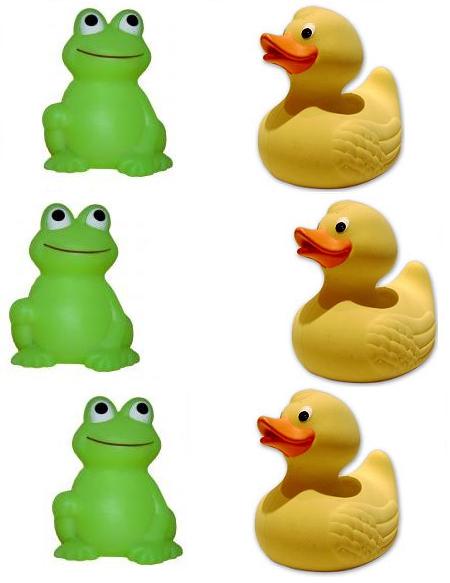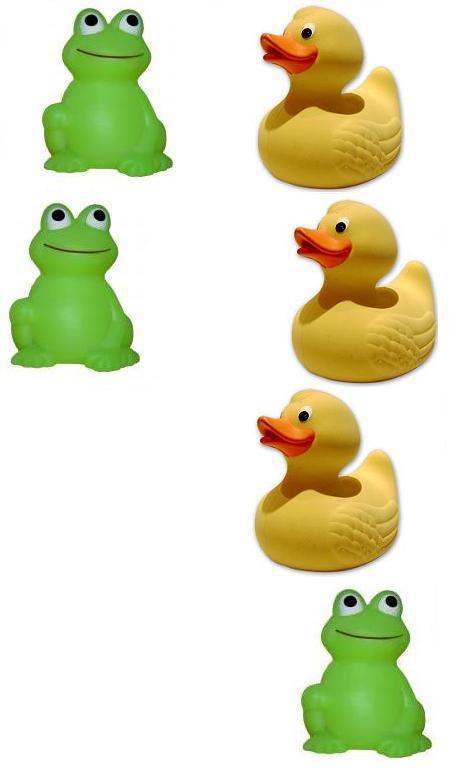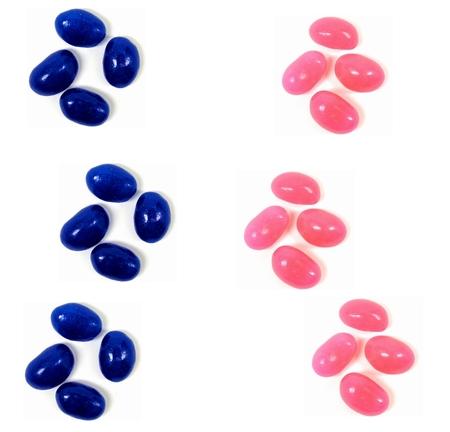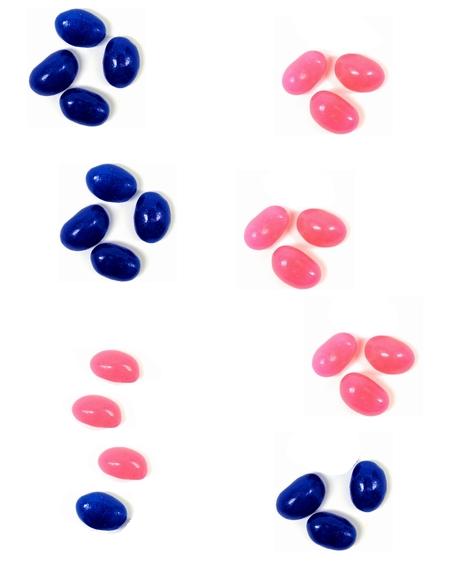I was reading a review today of a new book about the mathematical career of Charles Dodgson – also known as Lewis Carroll for his “Alice in Wonderland” stories. I hadn’t known until today that the wonderful brandy/water math puzzle was invented by Mr. Dodgson. It goes something like this:
There are two glasses, one containing brandy, and the other containing an equal amount of water. Take a teaspoon of the brandy from the first glass and pour it into the second glass. Mix thoroughly. Now take a teaspoon of the mixture and pour it back into the first glass.
Question: Is there more water in the first glass than brandy in the second glass, or less, or the same?
What struck me upon reading this was that I found myself less interested in just solving the puzzle than in coming up with a way of looking at it that would make the solution obvious to anybody. Maybe it’s the teacher in me.
The first thing I tried was to replace the liquid with objects – it’s much easier for people to think about counting things than to think about measuring stuff. So here is a slightly different version of the problem. Suppose there are two bags – one containing toy frogs and the other containing rubber ducks:

Take a frog out of the first bag and put it in the second bag. Now there’s one less frog in the first bag, and there’s one frog in the second bag, hanging out with the ducks:

But here is where things get problematic. If you want to put an equal amount of duck and frog from the right-side bag back into the left-side bag, you need to remove one quarter of each of the ducks, as well as one quarter of that travelling frog (in order to make one whole toy to put back into the first bag). Unfortunately that means carving up your toys. I happen to be against wanton cruelty to plastic toy animals – especially if they have big eyes and smile a lot.
The problem is that we don’t have small enough pieces to work with. Instead of cutting each toy into four parts, maybe we should use something that already is in four parts.
The solution to this problem, as to so many problems, is jellybeans. Let’s replace each toy animal with four jellybeans – each frog becomes four blueberry jellybeans, and each duck becomes four bubblegum jellybeans.
Place all the blueberry jellybeans in the left bag, and all the bubblegum jellybeans in the right bag:

Notice that we have asserted the following scientific equivalence:
Four jellybeans = one toy animal = 1 teaspoon of brandy
One group of four jellybeans is removed from the first bag and placed in the second bag:

Now the rest is easy. From the right bag we remove one jellybean from each of the four groups, and place it in the left bag:

Lo and behold, there are exactly as many bubblegum jellybeans in the first bag as there are blueberry jellybeans in the second bag.
And so we have found it – the answer to Mr. Dodgson’s little puzzle: There is exactly as much water in the first glass as there is brandy in the second glass.
“When I find a thing,” said the Duck: “it’s generally a frog, or a worm.” – From Alice’s Adventures in Wonderland, by Lewis Carroll
My solution was to imagine that each glass held one teaspoon of liquid, which made the answer pretty obvious. 🙂
Ken – enjoyed your explanation of how to solve Dodgson’s puzzle. But I’ve a pedagogical question: Do you think the inclusion of the toys helps a student to understand the solution process, or was it a dead end that you included to illustrate your own thought process? In other words – would it have been more efficient from a teaching/learning perspective to jump directly to the jellybeans? I can see arguments on both sides and was just curious about your perspective. Cheers, and thanks for the interesting blog.
Karl – your solution is brilliant!! 🙂 I wonder though whether it will be understood by people who don’t already grasp the underlying principles.
In answer to Nathan’s question: Both reasons. It helped my own thought processes, and it also was a way-point for introducing the idea of discretizing the problem. (i) First go to N objects, and then (ii) step up to N x (N+1) objects (ie: the jellybean scenario). Karl’s clever solution was equivalent to the case where N = 1.
I am currently reading Lewis Carroll in Numberland – thanks for your great explanation of this problem! I was getting caught up in not looking at the transaction as a whole: I kept thinking, if the first teaspoon is pure brandy, how could the transferred amounts of brandy and water be equal? The second teaspoon is not pure water – some brandy is mixed in!! Agh. Finally, with your explanation, i do understand. Carroll asks us, “If you consider the whole transaction…” I realize now that there is not quite a full teaspoon of brandy in the water glass, and not quite a full teaspoon of water in the brandy glass – the amounts of each are the same. Whew. I found the explanation in the book, that the amounts of total liquid are equal, is wholly unsatisfying!